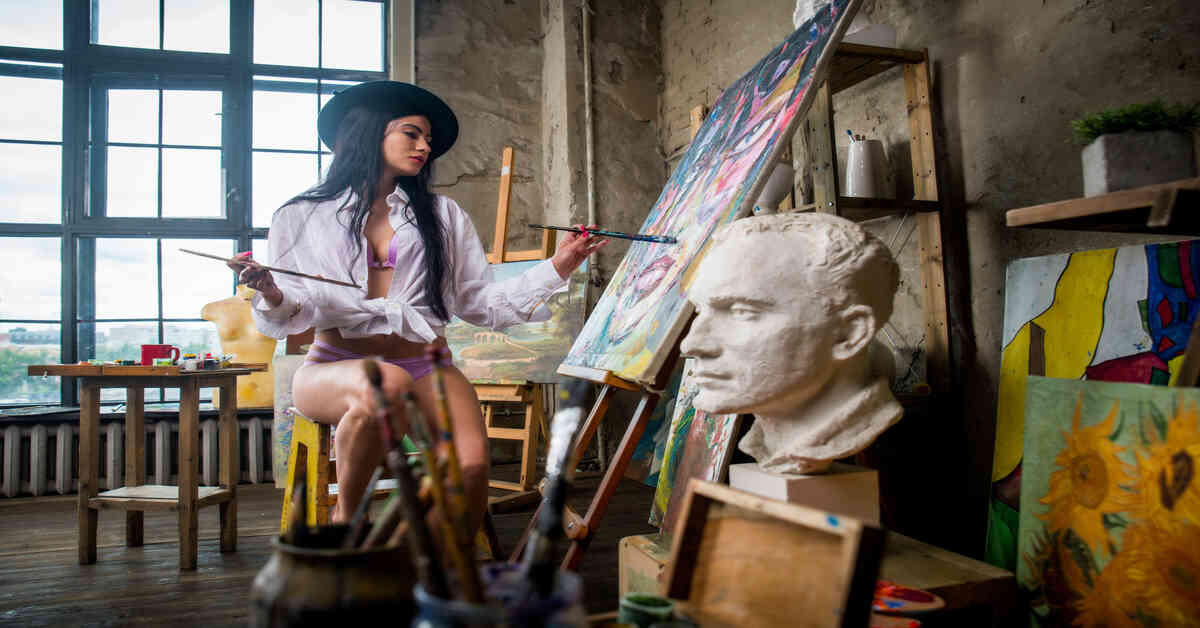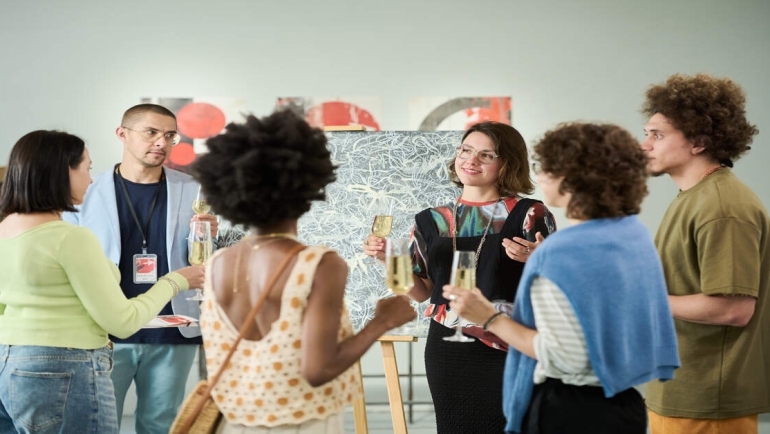Live Performance November 12, 2025

Can Artists Truly Revolutionize Modern Culture and Society?
Art has always been a mirror of mankind, a reflection of the way that we see, feel, and develop. Behind all great movements in art however is an individual who dares to think differently. These are the visionaries whose brush strokes, lyrics and performances have influenced our collective imagination. The Influence of Iconic Artists goes way beyond museums and galleries; it has a hold in fashion, politics, technology, and even in defining identity in the new world.
This discussion goes deep into the way in which the legendary artists have transformed not only the manner of our creation, but also the manner in which we live, think and relate.
Defining “Iconic” in the World of Art
We should first find out what is meant by Iconic Artists before delving into the consequences of these artists. Not only fame and talent, but the skill of breaking the norms, evoking emotion, and leaving an everlasting legacy.
A classic artist breaks the rule and broadens our perception of beauty and sense. They are cultural invaders, individuals who transform creativity into social statement and personal expression into something universal. Their impact cuts across generations and both the art lovers and the common citizens are inspired.
The Cultural Power of Artistic Visionaries
Artists over the ages have used their medium to convey the truths that are difficult to be communicated by the society. Their works tend to appear at the period of transformation when the collective feelings were reflected and the way of culture was formed.
For example:
- Vincent van Gogh demonstrated to the world that there is beauty in the pain and in the imperfection.
- Frida Kahlo transformed femininity, endurance and identity with the use of intensely personal paintings.
- Andy Warhol was a man who was able to merge art and business, making ordinary items into cultural symbols.
These artists did not simply make artworks, they turned out to be the representatives of revolution, compassion, and personality. The Effect of Iconic Artists can thus be regarded as an international discussion between society and creativity.
How Iconic Artists Shape Modern Culture
Creativity, innovation, and self-expression are the cultural values that are promoted by artists, in modern culture. This is the Influence of icons of artists present in nearly all aspects of every-day life:
- Fashion: Fashion designers such as Alexander Mcqueen and Jean-Michel Basquiat were introducing artistic rebellion into the runway.
- Music: Bands such as Bob Dylan, The Beatles, and Lady Gaga altered the manner in which music expressed political and emotional realities.
- Movies and Photography: The work of the directors such as Stanley Kubrick as well as photographers such as Annie Leibovitz has shaped the way stories are told and the way things look around the world.
Social media, such as Instagram, Tik Tok, and others, are not an exception since they also utilize social artistic concepts, composition, narration, and emotional appeal, which demonstrates that art is still at the core of contemporary creativity.
The Social and Political Impact of Iconic Artists
Art doesn’t exist in a vacuum. The Influence of the Iconic Artists usually finds its way into the social and political movements that shape the history afresh.
- The painting of Guernica by Pablo Picasso was like the face of war horror and also turned out to be the world symbol of anti-violence.
- The Civil Rights Movement was represented in music by Nina Simone, a combination of art and activism.
- The graffiti by Banksy is still thought provoking on the subject of inequality, capitalism, and freedom.
These artists changed their individual beliefs into societal awareness. Their art proves the fact that art is not passive, the force that questions the systems and elevates humanity.
The Psychological Impact of Iconic Artists
Art is deeply emotional. It evokes something in us which logic will never tell us. The Power of Iconic Artists can be seen in the fact that they can reach the subconscious, they can arouse compassion, recollection, change.
Art therapy research demonstrates that exposure to iconic art de-stresses, increases creativity, and leads to emotional healing. As human beings stand in front of Starry Night by Van Gogh or listen to the symphonies of Beethoven, they feel that they are associated with something bigger than themselves and this is evidence that art is a universal language of emotion.
How Iconic Artists Influence Education
The Influence of Iconic Artists has been spread into schools and colleges all over the world. Their works are not only being examined on the basis of technique but also in terms of their philosophical, cultural, as well as historical perspectives.
There are iconic artists who are commonly used in teaching art:
- Critical Thinking: Students will be taught how artists break the rules and kick-start the discussion.
- Cultural Literacy: The classic works give the background on the development of the society.
- Creative Confidence: Students can learn to adopt experimentation and sincerity by studying such innovators as Picasso or Georgia O’Keeffe.
In that regard, the iconic artists will be eternal teachers, they will define the way the new generation will perceive art, society and self-expression.
The Economic and Media Influence of Artists
One can easily overlook the magnitude of the influence of Iconic Artists on the economies and industries. Tourism, fashion, film, and technology are all run by art. An example is the Louvre in Paris which receives millions of tourists annually, with many of them flocking to see the Mona Lisa by da Vinci.
Digital economies are also developed by modern artists. The approach to creativity that is creating value is being remodelled through NFT (non-fungible token) art markets, social media campaigns and brand collaborations. The fact that such artists as Yayoi Kusama or Banksy are known all around the world demonstrates that art is still the source of emotional and economic strength.
The Art-Technology-Modern Society Intersection
Technology has enhanced the Impact of Iconic Artists by providing them with an avenue of reaching international audiences. Online installations, virtual galleries, and art created through AI are changing the way that we experience creativity.
The current visionaries such as Refik Anadol utilize information and machine learning in order to produce immersive settings. The combination of art and science does not only widen the limits of creativity, but also reinvents how society relates to imagination.
With changing technology the artist-audience relationship is becoming more dynamic, one in which it democratizes access and motivates participation.
Artists as Voices for Diversity and Inclusion
Amplification of underrepresented voices is also a part of the Impact of Iconic Artists. The work of artists of marginalized communities has transformed the narratives as they recovered their identity and history through their art.
For instance:
- Jean-Michel Basquiat introduced street culture and the black identity to fine art.
- Yayoi Kusama utilized her mental health issues to make easily relatable art.
- Beyoncé is a Black feminist that has impacted millions of people through her visual narratives.
Being representative and authentic these artists are also able to encourage inclusion and social development, as being visible is an art in itself.
Modern Icons: The New Era of Influence
The new era of art has emerged through the digital age. The Effect of the Iconic Artists in the 21st century is observed in the way visual art, film and music intersect with each other.
Artists such as Kendrick Lamar, Billie Eilish, and Takashi Murakami show that modern creativity does not have a medium. They work together in fields of industry, music with fashion, animation with fine art – producing a new culture of innovators.
It is a mixture of genres, which redefines the artist in the present-day world: one who is flexible, multi-dimensional and also globally-linked.
Lessons from the Impact of Iconic Artists
The heritage of the great artists provides significant lessons to all people, not only to the creators.
Five lessons inspired by the Effect of Iconic Artists are:
- Authenticity Over Approval: Iconic artists stick to their vision even in cases of misunderstanding.
- Feeling is Strength: Art dealing with people modifies society.
- Creativity Demands Aspiration: The real innovation involves going out of comfort zones.
- Diversity is the Driving Force: Inclusion art is a symbol of all peoples and communities.
- Art Never dies: Artists die, but their messages live on in every inspired generation.
All the principles accentuate the role of creativity in the development of individuals and nations.
Final Thoughts
The Effect of Famous Artists brings us back to the fact that creativity is not a job but a duty. Artists record our hardships, challenge our institutions and they serve to remind us of our humanity as one people. Their work instills compassion, boldness and creativity – the foundations of progress.
The frescoes of the renaissance and the digital art of the present day are telling the same thing: the same one: that beauty and meaning are in everyone. Artists that are iconic may be called as the translators of human emotion, as they provide the tone of what words cannot provide.When you read about their lives, keep in mind that their masterpiece is not a painting or a song, it is the change that they invoke in us. Since art makes us change the way we view the world, the world too changes.


